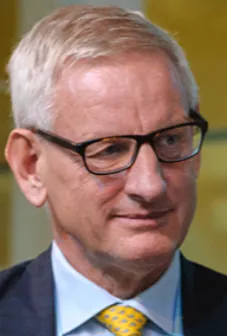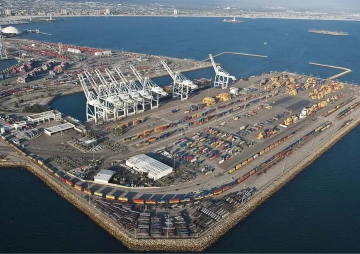
This article is a part of the series - Raisina Chronicles 2024
It was only in 2016 that the first Raisina Dialogue was held, but in the short years since then, it has already established itself as one of the premier global forums on issues of geopolitics, geoeconomics and geo-technology. One of the reasons for this is undoubtedly the increasing weight of India’s voice in the global discourse, as it is the world’s most populous nation and largest democracy. India’s skilful handling of the G20 presidency in 2023 reinforced its centrality on the global stage. But important as this is, I believe the main reason for the rise of the Raisina Dialogue is that it has managed to attract a broader array of voices from a wider part of the world than perhaps any other international gathering that it could be compared with.
The times we live in are challenging, characterised by the simultaneous rise of geopolitical tensions that divide the world and global challenges that demand a more cohesive response from the international community. While there is a pressing need to achieve more by collective action, our ability to do so is increasingly endangered. The fissures from ongoing geopolitical tensions are obvious. In Europe, Russia has launched a large-scale aggression with the explicit aim of depriving Ukraine of the right to choose its future and subsuming it within some new version of a Greater Russian Empire. In Asia, a more assertive China is building up its military might, expecting other countries to bow to its will. And with the United States seeing its position of military supremacy under threat, moves and countermoves inevitably lead to an increase in tensions.
The times we live in are challenging, characterised by the simultaneous rise of geopolitical tensions that divide the world and global challenges that demand a more cohesive response from the international community.
The shifting power balances in a world which is now multipolar has inflicted challenges upon existing multinational institutions and structures, opening up the scope for new conflicts to emerge. We have seen the Palestine issue re-emerge with a vengeance, putting into question many assumptions about where that important region is heading. Meanwhile, the issue of Afghanistan has disappeared from the headlines, but whether that will remain the case, or if that issue will also return with a vengeance, is another of the many open questions we are facing in the days to come. The rise of geopolitical tensions has also endangered a collective response towards sustaining peace and stability. The UN Security Council still sits as a dated reflection of 1945 while facing paralysis to deliver functional resolutions to one crisis after another, all due to disagreements among its permanent members. The capture of the Council by the political interests of some permanent members has arrested the efficacy of the global institutional architecture to deliver and maintain solutions to conflicts that have the potential to destabilise crucial regions. The disastrous conflict in West Asia has compounded the perception of our institutions as suboptimal to defusing geopolitical fault lines.
The shifting power balances in a world which is now multipolar has inflicted challenges upon existing multinational institutions and structures, opening up the scope for new conflicts to emerge.
Geoeconomics has also made its comeback on the global scene. The spectacular economic rise of China during the last few decades has changed the global economy to a large extent. Even in times of mounting economic difficulties, nearly a third of total growth in the global economy originates from China. This shows the risks faced by the global economy towards maintaining a resilient global supply chain against calls for fragmentation and increased protectionism. There is a need to heighten the focus towards working intensely on global trade agreements that will facilitate a more connected and diversified globalised supply chain. As we are now seated in a phase of slowed growth, any supply chain vulnerability can disproportionately affect the prospects, primarily of the emerging and less developed economies and dampen the decades of impressive progress in moving towards the realisation of the Sustainable Development Goals agreed in the UN.
Geoeconomics has also made its comeback on the global scene. The spectacular economic rise of China during the last few decades has changed the global economy to a large extent.
Meanwhile, the rise of new technologies offers a fertile arena with numerous possibilities for economic progress. As we gradually leave the industrial era which dominated the last two centuries, a digital era is firmly standing on our doorstep and is poised to shape our future in ways we cannot yet fully see. The internet has already embedded itself as a crucial part of the daily lives of significant populations across the world, and we are quickly moving into years where artificial intelligence will be ubiquitous, quantum computing will bring revolutionary new possibilities, and synthetic biology might start changing fundamental aspects of our lives. Achieving domination in these technologies is now on the agenda of all major economies. So far, the United States is the preeminent innovation power, but it is increasingly being challenged not only by China but also by global networks of innovation where the power of rising countries like India are bound to grow. The countries that educate their human talent, commit themselves to research and development, and develop an open entrepreneurial culture will be the ones to avail the greatest possibilities in the decades that are before us.
Leapfrogging towards dominance in new technologies also demands coordinated policy formulation to match the momentum of expanding innovation. There are bound to be issues which we cannot foresee as of today, making policy cohesion an imperative for a smooth transition towards an era of rapid technological advancement. As the AI revolution starts to accelerate, questions on the possibility of finding agreement on a common global framework or structure for setting the standards, principles and limitations around AI have started featuring on international forums. There is very little disagreement on the need for this to happen, but far less agreement on how and by whom this can be done.
A similar institutional incapacity to facilitate swift policy responses was evident in our global health architecture when we failed to secure more equitable access to the life-saving vaccines in the initial stages of the COVID-19 pandemic that took the lives of tens of millions of people around the world. We were lucky to find vaccines with a speed not seen before, owing to the scientific advancements facilitating rapid development of the necessary production capacity, but our policy responses to equity in vaccine sharing were not as efficient as our scientific feat. The COVID-19 pandemic is unlikely to be the last, and the next one could well be as contagious and significantly more deadly. Intense international work is underway to update the rules and structures of global health cooperation and deliberate on contentious issues like vaccine equity, but whether this will be sufficient to meet the next pandemic is very much an open question.
To these must of course be added the challenge of climate change. What is needed to meet the goals set in the Paris Agreement of limiting the temperature rise to 1.5 degrees is nothing less than moving away from the fossil fuels that drove the centuries of industrial development, and to do so within just a couple of decades. The challenge before emerging economies is enormous, and that before humanity is even bigger. The older powers of the US and Europe are responsible for most of the emissions already accumulated in the atmosphere, but the rising economies of China and India carry the heaviest responsibility for the emissions now and in the decades ahead. A massive change is required in the structure of the global economy and fuel consumption patterns of billions of people. Tensions will be there. A siloed economic approach focusing on protectionism poses friction towards an accelerated and cost-effective green transition. The resistance to iron out differences among manufacturing economies of green technologies like EVs and photovoltaic cells and those economies that are aggressively looking to transition to greener energy is one of the challenges which will shape the trajectory of global policy responses. Whether coordinated efforts on transitioning away from non-renewables which have produced the Dubai Consensus achieved at the COP28 will elicit sufficient global cooperation on these issues is difficult to guess at the time of writing.
All of these are issues that have figured prominently on the agenda of the Raisina Dialogue over the years, and the discussions have been characterised by the fact that they have curated varied perspectives from across the world. It has not been just an Indian dialogue, but truly a global one, where the younger voices from around the world are also given a prominent role. In a world challenged by geopolitical, geoeconomic and geo-technological fissures, Raisina Dialogue 2024 has all the potential to be even more interesting as we face an ever more challenging world and the need for global cooperation becomes paramount.
Please read the full volume here.
The views expressed above belong to the author(s). ORF research and analyses now available on Telegram! Click here to access our curated content — blogs, longforms and interviews.




 PREV
PREV



